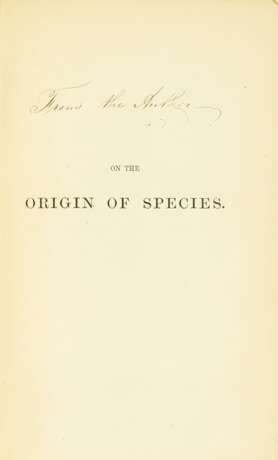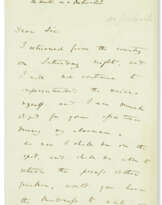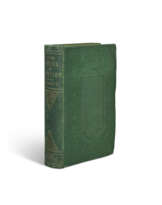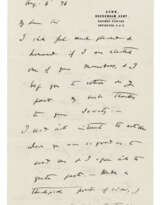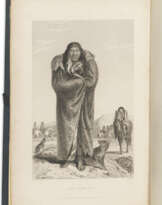ID 1032684
Lot 32 | On the Origin of Species
Valeur estimée
$ 30 000 – 50 000
A bright presentation copy for a contributor to this edition: the Harvard professor, Jeffries Wyman. This third edition is the first substantially revised edition of the Origin since the first came out in 1859. This copy belonged to Jeffries Wyman (1814–1874), Harvard Professor of Anatomy and President of the American Association for the Advancement of Science (1858). Although Wyman’s mentor, Richard Owen, was an anti-Darwinist, Darwin still enlisted Wyman’s support due to his work on the anatomy of higher apes. The two men corresponded between 1860 and 1866, with Darwin writing at one point “I know hardly anyone whose opinions I should be more inclined to defer to” (DCP 2936). This copy has numerous passages emphasized in pencil by Wyman, relating to topics that interested him or where he provided Darwin with information.
Darwin cites Wyman on p. 12 of this edition, relating an anecdote that Wyman had relayed in Septhember 1860, after he had read the first edition of Origin: “Professor Wyman has recently communicated to me a good illustration of this fact; on asking some farmers in Florida how it was that all their pigs were black, they informed him that the pigs ate the paint-root (Lachnanthes), which coloured their bones pink, and which caused the hoofs of all but the black varieties to drop off; and one of the ‘crackers’ (i.e. Florida squatters) added, ‘we select the black members of a litter for raising, as they alone have a good chance of living.’” Wyman has marked in pencil some 14 passages throughout the text, particularly in Chapter VII, “Instinct,” on bees’ cell-making, and in Chapter XIII, “Embryology.”
“This edition was prepared in early 1861 and 2,000 copies appeared in April. There was to be no further edition for another five years. It is externally identical to the first two, but the text differs considerably from them; 33 sentences are dropped, 266 are added and 617 are altered, making 14 percent of the total of all changes to all editions. The third edition is the first to include a list of additions and corrections since the previous edition, showing that it is no longer possible to refer to the page numbers of the first edition. Darwin has also added a ‘Historical Sketch’ of the development of evolutionary theory and there is also a postscript referring to a favourable review by Asa Gray … The third edition marks the beginning of Darwin’s expansion of the Origin by the addition of whole new paragraphs, most of which are referred to in his list of additions. The net effect of the new material was to increase the text by 35 pages amounting to about 9,000 words, plus the historical sketch, which was in much smaller type” (Gordon Chancellor, “Darwin’s Origin of species, third edition (1861), An Introduction”. Freeman 381.
Octavo (198 x 120mm). With folding lithographed diagram. 2pp publisher’s ads at end. Original blindstamped green cloth, spine lettered in gilt, Edmunds & Remnants binders ticket (hinges cracked, a little separation to cloth at upper joint); custom clamshell box. Provenance: Jeffries Wyman, 1814–1874 (presentation inscription in the hand of Murray’s clerk on half-title “From the Author”; ownership inscription and signature on title “J Wyman from the author June 1861”; Wyman is named on Darwin’s list of presentation copy recipients).
| Artiste: | Charles Robert Darwin (1809 - 1882) |
|---|---|
| Lieu d'origine: | Angleterre |
| Catégorie maison de vente aux enchères: | Médecine et sciences, Livres imprimés |
| Artiste: | Charles Robert Darwin (1809 - 1882) |
|---|---|
| Lieu d'origine: | Angleterre |
| Catégorie maison de vente aux enchères: | Médecine et sciences, Livres imprimés |
| Adresse de l'enchère |
CHRISTIE'S 20 Rockefeller Plaza 10020 New York Etats-Unis | ||||||||||||||
|---|---|---|---|---|---|---|---|---|---|---|---|---|---|---|---|
| Aperçu |
| ||||||||||||||
| Téléphone | +1 212 636 2000 | ||||||||||||||
| Fax | +1 212 636 4930 | ||||||||||||||
| Conditions d'utilisation | Conditions d'utilisation | ||||||||||||||
| transport |
Service postal Service de messagerie ramassage par vous-même | ||||||||||||||
| Modes de paiement |
Virement bancaire | ||||||||||||||
| Heures d'ouverture | Heures d'ouverture
|
